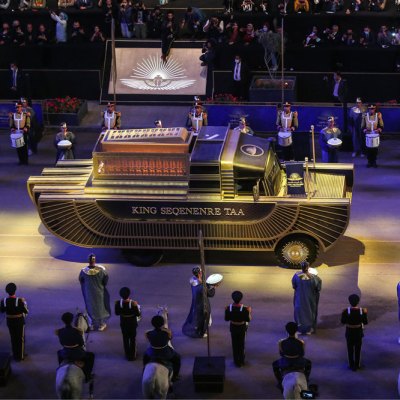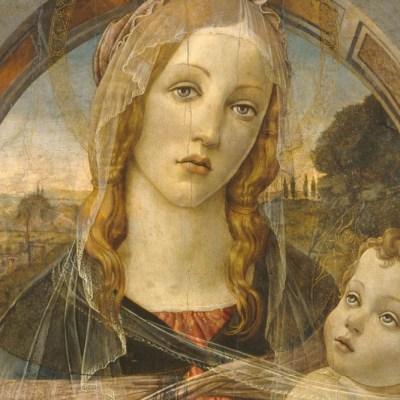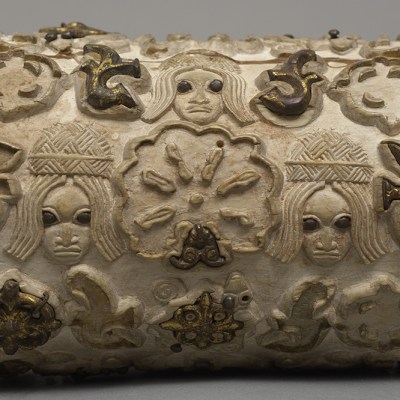On Tuesday, the Egyptian Ministry of Tourism and Antiquities announced the discovery of the tomb of Thutmose II – the first royal tomb to be unearthed since that of Tutankhamun was found in 1922. Mohamed Ismail Khaled, secretary-general of Egypt’s Supreme Council of Antiquities and co-leader of the British-Egyptian team working on the excavation, described the discovery as ‘one of the most significant archaeological discoveries in recent years’, the Art Newspaper reports. The entrance of the tomb, near the Valley of the Kings in west Luxor, was found in 2022 and was thought to belong to one of the wives of the 18th-dynasty kings. However, the recent unearthing of fragments of religious texts used for royal burials and alabaster vessels engraved with the names of Thutmose II and his principal wife, Hatshepsut, confirm the tomb to be the pharaoh’s. Thutmose II’s mummy and other contents from the tomb were discovered at a nearby site in 1881. They are thought to have been moved not long after the king’s death when a flood left the tomb in a ‘poor state’, said head of the Egyptian Antiquities Sector at the Supreme Council of Antiquities, Mohamed Abdel Badi, in a statement. Further excavation and restoration of the site is expected to continue for another two years.
The Netherlands is returning 119 Benin bronzes to Nigeria, reports Artnet. The legal transfer of the bronzes – which were looted by British forces in 1897 and later acquired by Dutch institutions – was confirmed by the Dutch minister for culture, Eppo Bruins, and Olugbile Holloway, director general of the Nigerian National Commission for Museums and Monuments, at a ceremony at the Wereldmuseum in Leiden on 19 February, where 113 of the objects are currently held. The other six artefacts come from the municipality of Rotterdam. The restitution is the latest in a series of returns made by the Netherlands in recent years, prompted by a governmental committee’s recommendation from 2020 that artefacts removed during colonial occupation should be ‘unconditionally return[ed]’ to their country of origin. In a statement issued on 19 February, Holloway thanked the Netherlands for the return, and expressed the hope that it would ‘set a good example for other nations of the world in terms of repatriation of lost or looted antiquities’.
The Department for Culture, Media and Sport announced more than £270m in funding in 2025/26 – some of it new, some of it already announced – for arts and culture venues, museums and heritage sites across the UK, the Arts Everywhere Fund is designed to help organisations ‘in urgent need of financial support’. National museums will receive a 5 per cent increase in their operating budgets, while a new £85m Creative Foundations Fund will be shared between capital projects to keep venues ‘up and running’. Other measures include £3.2m in funding for cultural education programmes and a £15m increase in grants for at-risk historic buildings. Also on Thursday, the Ministry for Housing, Communities and Local Government confirmed a grant of £67m to ten cultural projects in the UK, including the National Railway Museum in York and the International Slavery Museum and Maritime Museum in Liverpool.
On Friday, the British Museum announced that it has chosen Lina Ghotmeh – Architecture (LG–A) to redesign its Western Range galleries in a project it describes as ‘one of the most significant cultural renovations undertaken anywhere in the world’. More than 60 architectural teams submitted designs after the competition was launched in May 2024, with the five finalists selected by a panel of experts and announced last August. It was LG–A’s designs, however, that ‘unanimously impressed the jury with their beauty, sensitivity and ingenuity’, said the museum’s director Nicholas Cullinan in an Instagram post on 21 February. Among previous commissions received by Ghotmeh, who was born in Beirut and is based in Paris, are the redesign of the Estonian National Museum and the Sara Hildén Art Museum in Finland. Her team will now begin working with the British Museum to present designs for the sculpture galleries, which comprises around a third of the museum’s galleries, in 2026.
Italian police have announced the discovery of a workshop producing fake paintings by artists including Klimt, Picasso and Banksy in the northern outskirts of Rome, reports the Guardian. The Carabinieri Command for Protection of Cultural Heritage, working with the Rome public prosecutor’s office, made the find when, after looking at listings of 19th- and 20th-century works on sale sites such as eBay and Catawiki, reports Artnet. In the raid, police found 71 paintings, both finished and unfinished, as well as painting equipment and materials, catalogues advertising the works for sale and forged certificates of authenticity. The identity of the forger and their accomplices has not yet been made public. The discovery comes after the Italian police exposed a Europe-wide forgery ring last year, accused of producing replicas in Italy, Spain, France and Belgium.



